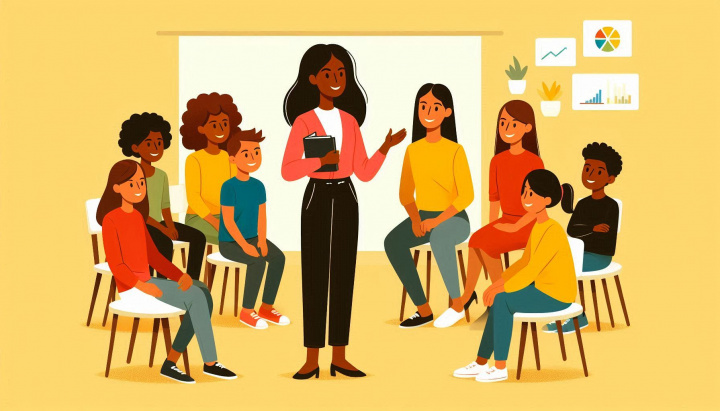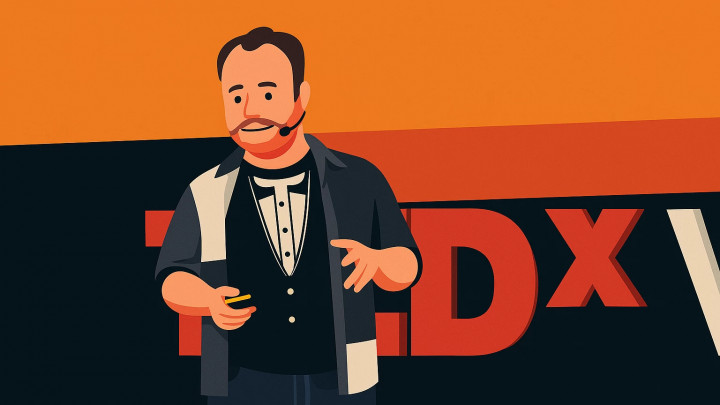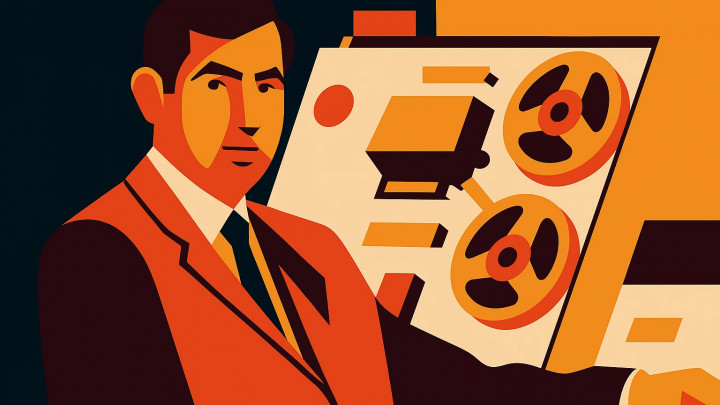The Feynman Technique: The Secret to Truly Understanding a New Language
Does this sound familiar? You spend hours memorizing a new grammar rule or a list of vocabulary words. You lean back, confident you’ve got it down. Then, the next day, in a real conversation, it’s like your mind has gone completely blank. The words won’t come, the rules blur together. This frustrating experience isn’t your fault; it’s a flaw in the learning method. Rote memorization rarely leads to real, usable knowledge.

But what if you could learn like a Nobel Prize-winning physicist? Richard Feynman was not only a genius in quantum electrodynamics but was also known as "The Great Explainer." He had a gift for breaking down the most complex scientific theories so simply that anyone could understand them. This ability gave rise to the technique named after him—a method that can work wonders for learning a new language.
The essence of the Feynman Technique isn't about cramming; it's about achieving deep comprehension. Instead of passively receiving information, it forces you to actively process and reconstruct it. Let’s explore how it works in four simple steps.
Pick a Concept You Want to Understand
This is the first and most crucial step. Choose a single, specific concept. Not "German grammar," but "the use of dative case after specific prepositions." Not "French vocabulary," but "the 15 most common verbs for daily routines." Vocafy’s frequency-sorted word lists are a perfect starting point, ensuring you begin with the most valuable and useful language components.
Teach It to a Child
Now for the magic. Grab a blank sheet of paper (or open a new note) and start to explain the concept you’ve chosen. Pretend you're teaching it to a 10-year-old or someone with zero prior knowledge of the topic. Avoid jargon, complex sentence structures, and technical terms. Use simple language, short sentences, and your own analogies and examples.
For instance, when explaining the present perfect tense in English, don’t start with a dry, grammatical definition. Try something like this: "Imagine the present perfect is a bridge connecting the past to right now. We use it when something happened in the past, but its result or effect is still important in the present."
Identify Your Knowledge Gaps
As you explain, you will inevitably hit points where you get stuck. You'll hesitate, use vague language, or realize you aren't entirely sure why a word is used a certain way or what the difference is between two similar concepts. These moments are golden. This is where the technique truly works its magic: it ruthlessly exposes the gaps in your understanding.
When you hit a roadblock, stop. Don't skip over it or try to gloss over it. Go back to your source material—your textbook, a reliable online guide, your language tutor—and study that specific, tricky part until it’s crystal clear.
Simplify and Refine
Once you've filled in your knowledge gaps, rewrite your explanation. It should now be much clearer and more confident. Read it out loud. Even better, use Vocafy to record your own simplified explanation and its corresponding example sentences. Listen back. Is it easy to follow? Is the language simple enough?
The goal is to produce a short, clear, and logical explanation that anyone could hear and instantly grasp. If you can do this, it means the knowledge is no longer just a memorized fact in your brain; it’s truly yours. You have deeply understood it and can recall it with ease.
Why Is This So Effective? The Science Behind the Method
The Feynman Technique isn't just a clever trick; it’s built on principles proven by cognitive science.
-
Active Recall: Instead of passively re-reading your notes, the technique forces you to actively retrieve information from your brain. This effortful process creates much stronger neural pathways than passive review.
-
Elaboration: When you explain something in your own words and with your own analogies, you connect new information to your existing knowledge. This creates a rich, dense mental web, making the new concept much harder to forget.
-
Metacognition (Thinking about your thinking): The technique trains you to be aware of your own comprehension process. You learn to accurately assess what you know and, more importantly, what you don’t know. This self-awareness is the foundation of all effective learning.
Practical Tips for Vocafy Users
-
Grammar Rules: Pick a tricky grammar rule. Create a new collection in Vocafy. Type out your new, simplified explanation. Then, add 3-4 of your own example sentences that illustrate its use. Record them in your own voice and listen back a few times over the next few days.
-
Vocabulary Building: Don't just memorize word lists. Choose a new word from a frequency list. Instead of just learning its definition, use the Feynman Technique to explain its meaning and context. "The word versatile means something can be used in many different ways. It’s like a Swiss Army knife. A versatile actor can perform in both comedies and dramas." Record this explanation alongside the word in Vocafy.
-
Idioms and Expressions: Phrases like "it's raining cats and dogs" are perfect subjects for this method. Explain both the literal and figurative meanings, and then create a short story or situation where it would be used naturally.
Common Pitfalls (And How to Avoid Them)
-
"This is too time-consuming!"
Yes, the Feynman Technique takes more time upfront than quickly scanning a list. But this isn't wasted time; it's an investment. The knowledge you gain this way is durable, saving you from having to constantly re-learn things you've forgotten. You don't need to do it for every single word, but for key concepts and difficult items, it's a game-changer. -
"This topic is too complex, I can't simplify it!"
If you feel this, it’s not a sign of your failure—it’s a sign of the method's success! It has found the precise point where your understanding is weakest. Don't give up. The solution is to break the problem down into even smaller pieces. If you can't explain an entire tense, try to explain just how to form the affirmative sentence, or just one specific use case. By tackling it step-by-step, even the most complex system will reveal its logic.
Language learning is a marathon, not a sprint. The Feynman Technique helps ensure that the miles you run truly count, turning fragile memories into a robust toolkit of knowledge you can use with confidence. Give it a try today with the last word or rule you struggled with.





